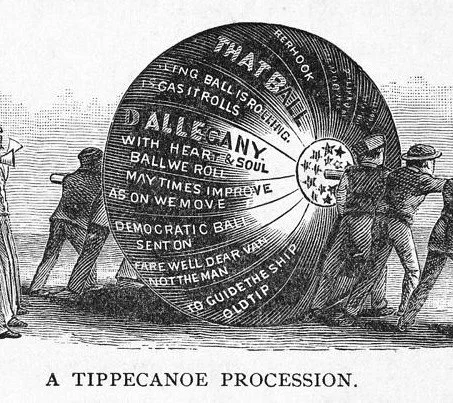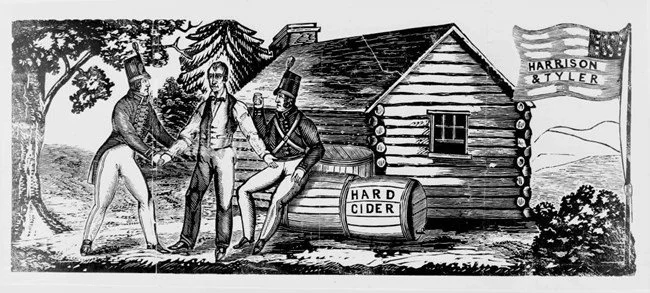Tippecanoe and branding, too
It’s election season, so here is a branding lesson from President William Henry Harrison.
If you know him at all, it is probably as the dude who caught pneumonia during his inauguration and dropped dead a month later, which will put a damper on anyone’s brand image. What you may not know is that he was a great self-marketer who ran the first modern presidential campaign in 1840.
The Whig Party sought to portray the incumbent Democrat, Martin Van Buren, as a snobbish, out-of-touch, New York wuss. The problem is their candidate, Harrison, was from an aristocratic family and yet still lived so extravagantly that he was constantly in debt. He was a war hero, but certainly no man of the people.
But then a prominent Democratic newspaper, trying to portray Harrison as a dullard, wrote, "Give him a barrel of hard cider and settle a pension of two thousand a year on him, and take my word for it, he will sit the remainder of his days in his log cabin."
But log cabins and hard cider were cultural symbols with which most people had positive associations. They were symbols of what we would call today “the working class.” Harrison’s campaign barged through the opening. While the Democrat ran a high-brow issues-driven campaign, his opponent ran an emotionally-driven, values-centric campaign. (Sound familiar?)
Harrison became the candidate of log cabin and hard cider. His campaign created posters, badges, dinnerware sets, and all kinds of swag with imagery that tied Harrison to the down-home log cabin. His campaign passed out hard cider at campaign rallies, where thousands of people marched for miles, drinking, chanting, singing, and rolling a 10-foot tin ball plastered with campaign slogans. He created a kind of “brand community” around himself, and he won easily.
In all marketing – including political marketing – symbolism is important. Today’s Republicans have appropriated symbols of the American Revolution, and not by accident. The term “tea party,” the “don’t tread on me” snake, the Betsy Ross flag. These symbols are culturally powerful metaphors that tie Republican ideology, somewhat unconsciously, to the values of the nation’s founders.
On a different front, consumer brands, too, have benefited from attaching themselves to culturally meaningful iconography – think of Coors Light’s association with the Rocky Mountains, Liberty’s Mutual’s use of the Statue of Liberty, Quaker Oats’ Larry the Quaker Man, or Levi’s and Wells Fargo, which both use imagery connected with the 19th century American West.
(A coda: Harrison’s running mate and successor 182 years ago was John Tyler, who somehow still has a living grandson.)


